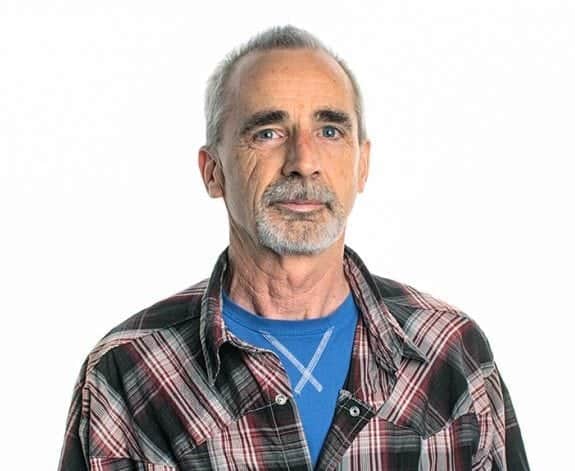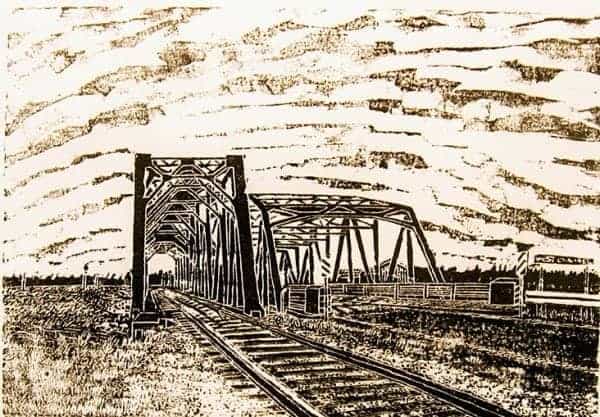From log cabins and churches to bridges and canoes, for about 30 years, Chris Robson has depicted the infrastructure of Northern life in his art.
The Hay River artist, whose work consists primarily of woodblock prints and ink and pencil drawings, will have 26 pieces on display at the Prince of Wales Northern Heritage Centre in Yellowknife this summer and fall.

The exhibition, called Ingrained Landmarks, is a retrospective of sorts for Robson's work. It is also his first show in Yellowknife.
In the prints and drawings on display, Northerners may recognize Yellowknife's Gold Range Hotel, Inuvik's Mad Trapper bar and the zoo in Hay River.
These NWT attractions were built to siphon profits from the territory's transient workforce and eventually became Northern institutions.
"The work I'm doing now is historical in its context, and that's what I like about it," Robson said on Tuesday.
He is also attracted to their architecture, and their sunken and decaying aesthetic.
To Robson, woodblock prints are an ideal medium through which to render these historic structures.
"The material seems to fit into the North for some reason – wood, and logs – to me it seems part of the Northern history," he said.
Much of Robson's work is in black and white, which he said reflects the extremity of Northern seasons.
In the Northwest Territories, he said, "the seasons control how you move about and how you do things."

Born in Vancouver, Robson studied fine art at Vancouver Community College and Emily Carr College of Art.
He moved to Hay River in 1981 and never looked back.
Robson's work has been shown at the Centennial Library, at the Hay River Museum, and at Inuvik's Great Northern Arts Festival.
Outside the territory, Robson's art has been displayed at the 2010 Winter Olympics in Vancouver, the NWT pavilion at Expo 86 in Vancouver, and at the Surrey Art Gallery in Surrey, B.C.
A full-time artist since 2010, Robson works primarily out of his home print-making studio, and sometimes sketches on site.
Robson has become increasingly conscious of the passage of time, and this awareness permeates his art.
"I'm always aware of how time marches forward and how things decay and disappear," he said.
"The next thing you know, 10 years just went by, 20 years just went by, and reflect you on that... It's more a memory of time."
Robson is one of two artists whose work will be on display at the museum in Yellowknife this year.
"A key factor for selecting artists is their connection to exploring, preserving and sharing the unique stories of the NWT with the world," Cherish Winsor, a spokesperson for the museum, stated in an email on Thursday.
"As an artist who reflects on rural landmarks and iconic images depicting the history and character of our communities, Chris's work is a natural fit."
Ingrained Landscapes will be on display until November 30.